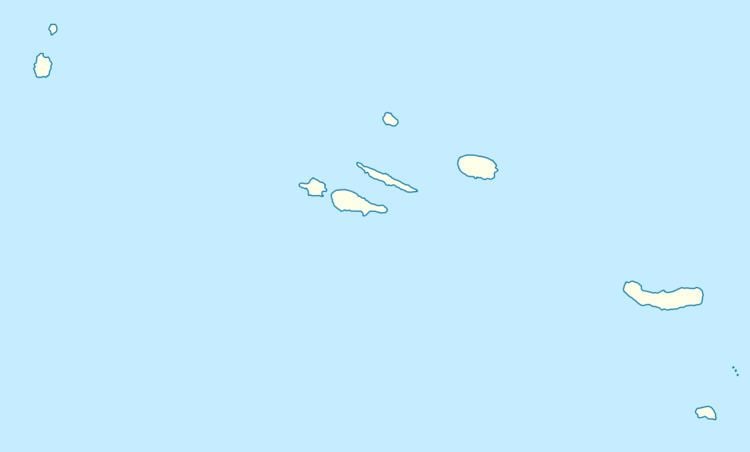Areas affected Azores | Max. intensity X (Extreme) | |
 | ||
Date June 15, 1841 (1841-06-15) Foreshocks June 12, 1841 (1841-06-12) | ||
The 1841 Caída da Praia earthquake (1841 Fall of Praia), also known as the Second Caída da Praia, was a series of seismic events occurring between 12 June and 15 June 1841, on the island of Terceira in the Portuguese archipelago of the Azores. Similar in scope to the first 1614 Cáida da Praia earthquake that destroyed most of the community, this second event is noted for the systematic process to assistance, document and catalogue the events of the tragedy.
Contents
History
The earthquake began on the morning of 12 June 1841, and was centred in the Ramo Grande area of the island of Terceira. The numerous earthquakes persisted throughout the day, and lead to intense rumbling on 13 June, resulting in the destruction of buildings and forcing people from their homes in Praia and nearby parishes. The 1641 catastrophe was already vivid in the minds of most, perpetuated by the Romantic prose of Francisco de Segura, and the townsfolk were already helped by innovative decrees issued by King Philip II after the events of the earlier tragedy.
Still, on the morning of 14 of June, new earthquakes resulted in further destruction.
Around 3:25 on the morning of 15 June, a violent earthquake caused the destruction of Praia and in Fontinhas, with general damage in eastern and northeast of Terceira, around Vila de São Sebastião and Agualva. From the beach until Cruz do Marco, a fissure opened-up, marking the fault that existed. The most damage occurred in Fontinhas, a parish where most of the buildings were affected.
Relief efforts
Since most of the townsfolk had abandoned their homes, there were no deaths, but hundreds of buildings were damaged in Santa Cruz, Fontinhas, Lajes, São Brás, Vila Nova, Agualva, Cabo da Praia, Porto Martins, Fonte do Bastardo and São Sebastião. Félix José da Costa Júnior, then secretary to the civil governor and the man responsible for providing assist to the victims of the disaster, eventually wrote Memória Histórica do Horrível Terramoto de 1841, wherein he described the circumstances and affects on the parishes of the Ramo Grande region from the earthquake:
By 1836, the archipelago of the Azores was divided into three districts, due to this politico-administrative reorganization resulting from the Liberal Reforms there were new bodies that emerged to assist in causes of emergency, and specifically, natural disasters common in the Azores.
Aftermath
When the town of Praia and surrounding parishes were ruined by the earthquake, management of the disaster and reconstruction was already secured by the Administrator-General of the district of Angra do Heroísmo, José Silvestre Ribeiro, and by administrative officials of the Civil Governor. In order to handle the calamity, José Silvestre Ribeiro created a network of commissions at the parish-level, so-called Comissões de Soccorros, presided by their respective parish priest, with rigorous instructions from a central Comissão dos Soccorros. The parameters for the reconstruction were defined by change and innovation:
What is needed is that the town of Praia should become better constructed then before...what is desired is that one day they should say, If here passed a genie of destruction, then afterward there came hands of goodwill and constructive, that built from the ruins buildings, that become more beautiful and solid...That, to turn the most famous and more regular the notable town of Praia, provide better direction to its roads, or repair whatever deffect, then before known, it was necessary to make a few expenses, then the Commission will not hesitate...The Commission then ordered that the construction of houses of straw should desist, a characteristic that was common at the time and that produced a poor, melancoly skyline. From this point forward, the characteristic tiled rooftop became the norm in the region. At the same time, the Commission issued instructions on the form and style to be applied in the reconstruction of the buildings; there were provisions stating that buildings should be symmetrical, uniform and proportional along each road, repairing errors in construction that had perpetuated in the village, including squares, roads and homes.
In order to guarantee financial resources, José Silvestre Ribeiro requested funds from the municipal councils of his district (on the islands of Terceira, Graciosa and São Jorge) in addition to soliciting assistance from the districts of Ponta Delgada and Horta. The philanthropic movement extended to the Portuguese capital and many of the districts in the Kingdom, where small commissions were created to collect funds to assist the village. For this mobilization, Praia da Vitória itself contributed to its own cause: national elites considered the town a national monument and sacred land for the Liberal cause. Cultural societies and recreational groups extended the network, linking the Terceirense town to various groups in Europe and Brazil, who also sent contributions.
A 20 February 1844 report published the public projects completed on public buildings and houses, classifying them as to the economic condition of their residents (poor and less disadvantaged) and the type of intervention (new building or repairs). Thirty-three homes constructed of straw were constructed in tile. Between 1841 and 1845, there a social change, resulting in rebuilding, change and innovation after the earthquake, organized by the district powers, that articulated the pleas for help to the archipelago, national government, European powers and Brazil. This process transformed the skyline of the municipality of Praia da Vitória.
